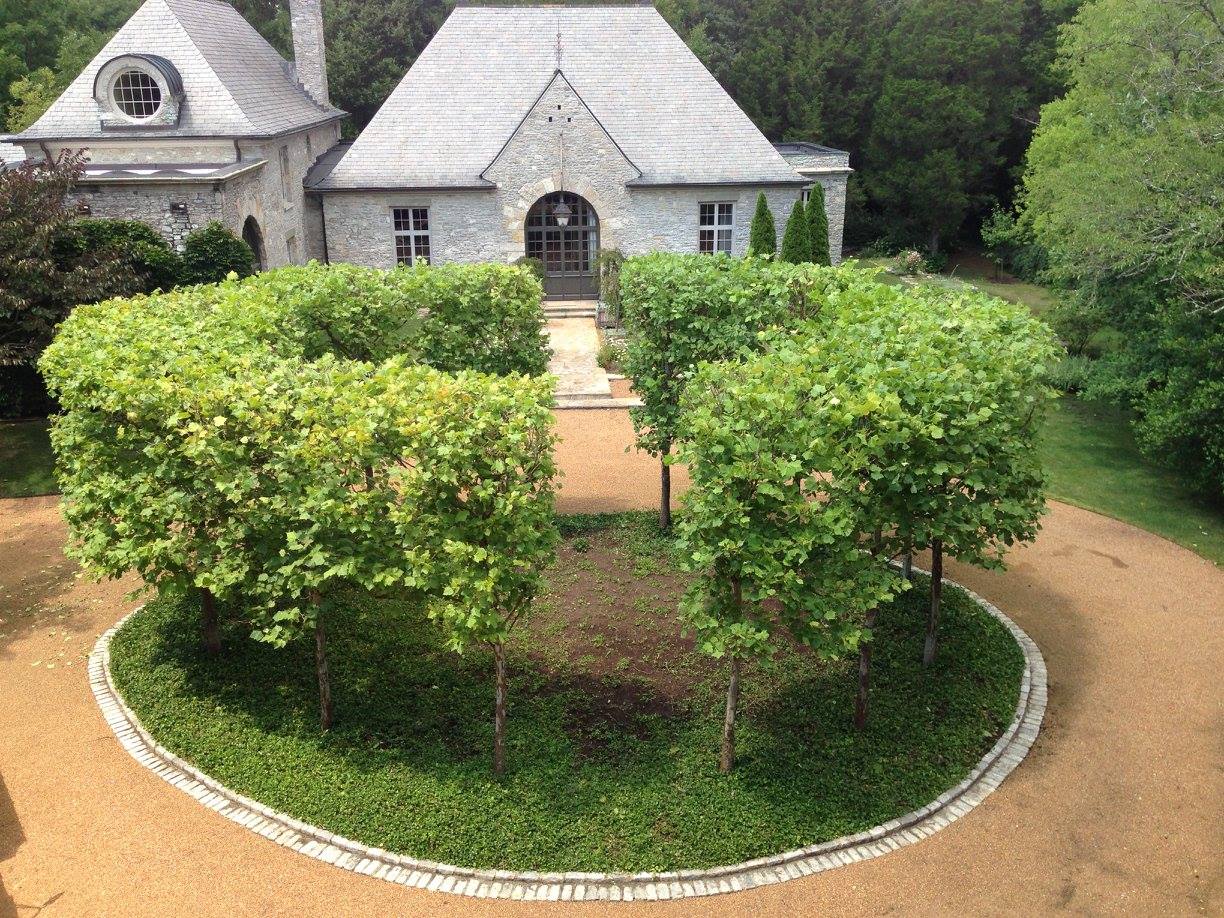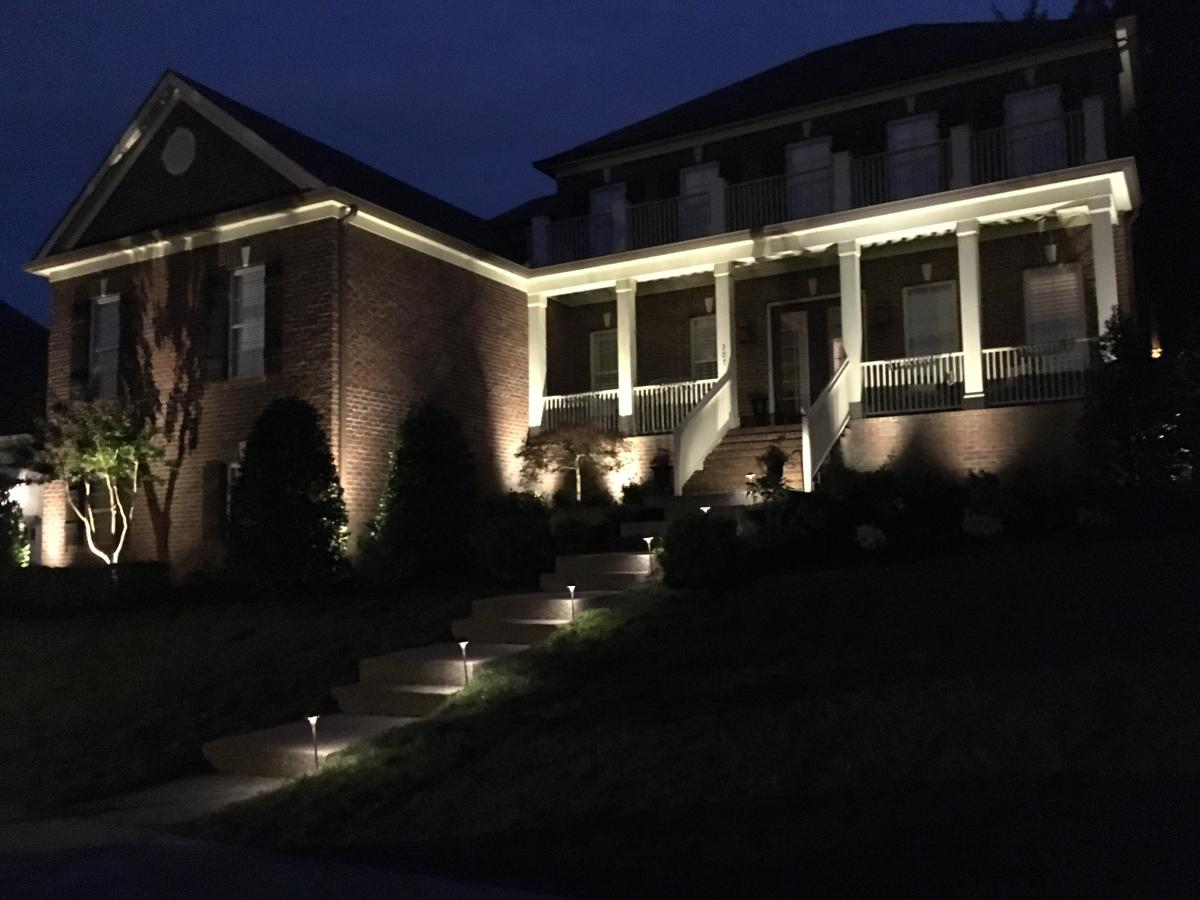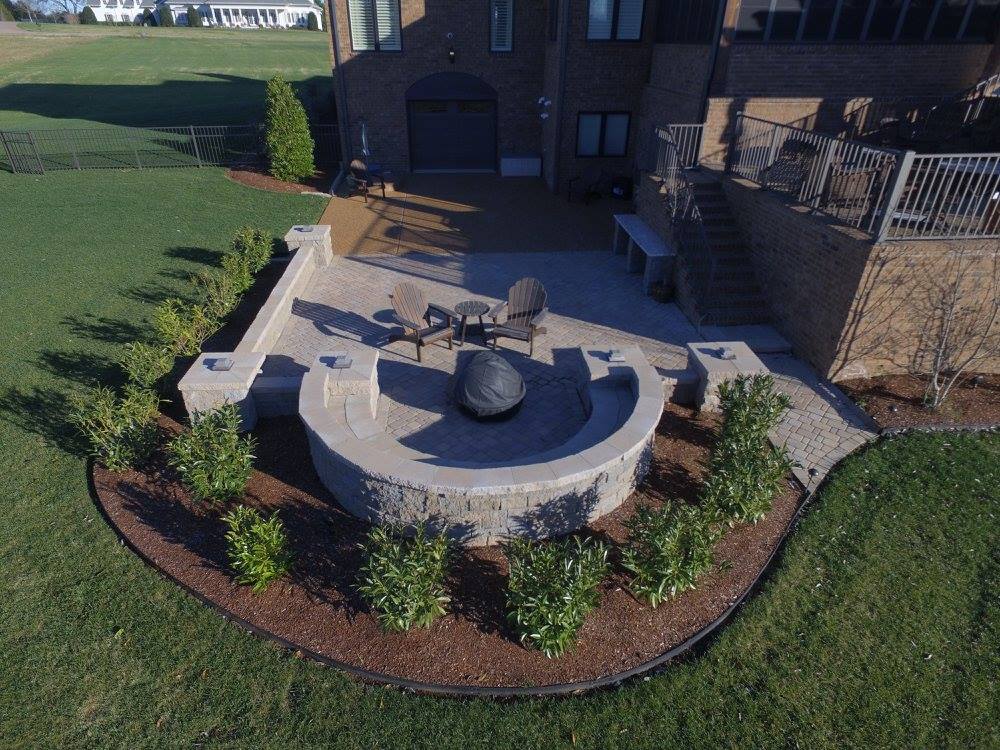With Nashville's increasingly unpredictable weather patterns and growing environmental consciousness, drought-resistant landscaping has become essential for Middle Tennessee homeowners. Xeriscaping—landscaping designed to reduce or eliminate irrigation needs—offers beautiful, sustainable solutions that thrive in our climate. Our professional landscape design services specialize in creating water-wise landscapes throughout Middle Tennessee.
Understanding Nashville's Water Challenges
Nashville experiences periodic droughts, water restrictions, and rising utility costs. Creating landscapes that can withstand dry conditions while maintaining aesthetic appeal is both environmentally responsible and economically smart.
Nashville Climate Factors:
- Average annual rainfall: 47 inches
- Summer heat stress periods
- Occasional drought conditions
- Clay soil with drainage challenges
- Zone 7a hardiness rating
Benefits of Drought-Resistant Landscaping in Nashville
Environmental Benefits:
- Reduced water consumption by 50-75%
- Lower chemical fertilizer needs
- Decreased lawn maintenance equipment use
- Support for native wildlife habitats
- Improved soil health over time
Economic Advantages:
- Lower water bills year-round
- Reduced maintenance costs
- Less frequent plant replacement
- Decreased irrigation system needs
- Increased property value
Practical Benefits:
- Less time spent on lawn care
- Beautiful landscapes year-round
- Resilience during drought periods
- Lower maintenance requirements
- Improved curb appeal
Top Drought-Resistant Plants for Nashville
Native Trees:
Eastern Red Cedar (Juniperus virginiana)
- Extremely drought tolerant
- Provides year-round screening
- Wildlife habitat benefits
- Grows 30-40 feet tall
Black Gum (Nyssa sylvatica)
- Outstanding fall color
- Tolerates various soil conditions
- Native to Middle Tennessee
- Moderate growth rate
Post Oak (Quercus stellata)
- Exceptional drought tolerance
- Beautiful branching structure
- Acorns support wildlife
- Long-lived, low maintenance
Drought-Tolerant Shrubs:
Sumac (Rhus typhina)
- Brilliant fall color
- Spreads to form colonies
- Extremely hardy
- Native to region
Spicebush (Lindera benzoin)
- Native understory shrub
- Yellow fall color
- Tolerates shade and drought
- Important for butterflies
Ninebark (Physocarpus opulifolius)
- White spring flowers
- Attractive seed heads
- Multiple cultivar options
- Low water needs
Perennial Powerhouses:
Purple Coneflower (Echinacea purpurea)
- Long blooming period
- Attracts butterflies and birds
- Self-seeding capabilities
- Multiple color varieties
For more native plant options, see our comprehensive guide to the best plants for Middle Tennessee.
Black-Eyed Susan (Rudbeckia fulgida)
- Bright yellow summer flowers
- Spreads to form colonies
- Excellent cut flower
- Virtually maintenance-free
Little Bluestem (Schizachyrium scoparium)
- Native ornamental grass
- Beautiful fall color
- Wildlife value
- Drought and heat tolerant
Xeriscaping Design Principles for Nashville
1. Planning and Design
Zoning by Water Needs:
- Oasis zones: High water areas near patios
- Transition zones: Moderate water needs
- Arid zones: No supplemental irrigation
Microclimates:
- Identify naturally moist areas
- Utilize shaded spaces effectively
- Work with existing drainage patterns
- Consider sun exposure throughout the day
2. Soil Improvement Strategies
Clay Soil Amendments:
- Add compost to improve drainage
- Create raised beds for better drainage
- Use gravel mulches appropriately
- Test soil pH and amend as needed
Drainage Solutions:
- Install French drains where needed
- Grade away from foundations
- Create swales for water management
- Use permeable hardscaping materials
3. Plant Selection and Placement
Right Plant, Right Place:
- Match plants to microclimates
- Group plants by water needs
- Consider mature sizes
- Plan for seasonal interest
Native Plant Priority:
- Choose Tennessee natives first
- Select adapted non-natives second
- Avoid water-hungry exotic species
- Research local growing conditions
Hardscaping for Water-Wise Landscapes
Permeable Materials:
Gravel Pathways:
- Natural drainage properties
- Low maintenance requirements
- Various color and texture options
- Cost-effective installation
Permeable Pavers:
- Allow water infiltration
- Reduce runoff issues
- Multiple design options
- Long-term durability
Decomposed Granite:
- Natural appearance
- Excellent for pathways
- Good drainage properties
- Complements native plants
Water Feature Integration:
Rain Gardens:
- Capture and filter runoff
- Showcase water-loving natives
- Reduce flooding issues
- Beautiful focal points
Dry Creek Beds:
- Manage seasonal water flow
- Add visual interest year-round
- Require minimal maintenance
- Complement xeric plantings
Learn more about water management in our comprehensive drainage systems guide.
Installation Process for Nashville Xeriscaping
Phase 1: Site Analysis (Week 1)
- Assess existing conditions
- Identify microclimates
- Test soil composition and drainage
- Plan irrigation zones
- Design layout and plant selection
Phase 2: Site Preparation (Week 2-3)
- Remove existing vegetation as needed
- Improve soil drainage where necessary
- Install hardscaping features
- Grade for proper water flow
- Install efficient irrigation (if needed)
Phase 3: Plant Installation (Week 4-5)
- Install trees and large shrubs first
- Add perennials and grasses
- Apply appropriate mulches
- Install efficient watering systems
- Final grading and cleanup
Phase 4: Establishment (Months 2-12)
- Monitor plant establishment
- Adjust watering as needed
- Apply seasonal fertilizers sparingly
- Prune and maintain as necessary
- Document what works best
Maintenance Calendar for Nashville Xeriscaping
Spring (March-May):
- Clean up winter debris
- Apply compost around plants
- Divide and transplant perennials
- Check and repair irrigation systems
- Plant new additions
Summer (June-August):
- Deep water weekly if rainfall insufficient
- Deadhead spent flowers
- Monitor for pest issues
- Harvest seeds for next year
- Enjoy reduced maintenance time
Fall (September-November):
- Allow seed heads to remain
- Plant trees and shrubs
- Apply winter mulch
- Clean up invasive weeds
- Plan next year's improvements
Winter (December-February):
- Prune dormant trees and shrubs
- Plan design changes
- Order plants for spring
- Maintain tools and equipment
- Research new drought-tolerant varieties
Cost Analysis: Traditional vs. Drought-Resistant Landscaping
Initial Installation Costs:
Traditional Landscaping:
- Design and installation: $8,000-$15,000
- Irrigation system: $3,000-$5,000
- Annual maintenance: $2,000-$4,000
- Water costs: $600-$1,200/year
Drought-Resistant Landscaping:
- Design and installation: $6,000-$12,000
- Minimal irrigation: $500-$1,500
- Annual maintenance: $800-$1,500
- Water costs: $150-$400/year
Long-Term Savings:
- Water bill reduction: 60-80%
- Maintenance cost reduction: 50-70%
- Plant replacement reduction: 80-90%
- Fertilizer and chemical reduction: 70-90%
Common Mistakes to Avoid
Design Errors:
- Mixing high and low water plants
- Ignoring microclimates
- Poor drainage planning
- Inadequate plant spacing
Plant Selection Issues:
- Choosing non-adapted species
- Ignoring mature plant sizes
- Failing to consider bloom times
- Not planning for winter interest
Installation Problems:
- Poor soil preparation
- Incorrect planting depths
- Inadequate initial watering
- Wrong mulch selection
Nashville Neighborhood Success Stories
Belle Meade Xeriscaping Project:
A 1-acre property reduced water usage by 70% while creating stunning seasonal displays using native plants and permeable hardscaping.
Green Hills Rain Garden:
Converted problematic drainage area into beautiful rain garden featuring native plants that handle both wet and dry conditions.
Brentwood Native Plant Garden:
Showcased Tennessee natives in formal design, proving drought-resistant plants can be elegant and sophisticated.
Working with Nashville Xeriscaping Professionals
Choosing the Right Designer:
- Experience with Nashville climate
- Knowledge of native plants
- Irrigation system expertise
- Sustainable design philosophy
- Local references and portfolio
Questions to Ask:
- What percentage water reduction can I expect?
- Which native plants do you recommend for my site?
- How will you address my soil drainage issues?
- What ongoing maintenance will be required?
- Do you offer plant guarantees?
Future Trends in Nashville Drought-Resistant Landscaping
Emerging Technologies:
- Smart irrigation controllers
- Soil moisture monitoring systems
- Weather-based watering schedules
- Native plant cultivar development
Design Trends:
- Edible xeriscaping with native fruits
- Pollinator-focused plant selections
- Climate change adaptation strategies
- Integration with renewable energy systems
Resources for Nashville Homeowners
Local Native Plant Sources:
- Tennessee Native Plant Society
- Nashville area nurseries specializing in natives
- Native plant sales and swaps
- Online resources for plant identification
Educational Opportunities:
- UT Extension Master Gardener programs
- Nashville area garden clubs
- Xeriscaping workshops and tours
- Online resources and webinars
Creating Your Nashville Xeriscaping Plan
Step 1: Assessment
- Evaluate current water usage
- Identify problem areas
- Assess sun/shade patterns
- Test soil conditions
Step 2: Design
- Create zones by water needs
- Select appropriate plants
- Plan hardscaping features
- Design maintenance access
Step 3: Implementation
- Start with easiest areas
- Phase installation over time
- Monitor and adjust
- Document successes and challenges
Step 4: Enjoyment
- Appreciate reduced maintenance
- Monitor water bill savings
- Share success with neighbors
- Continue learning and improving
Conclusion
Drought-resistant landscaping in Nashville offers the perfect combination of environmental responsibility, economic benefits, and aesthetic beauty. By working with Middle Tennessee's natural climate patterns rather than against them, homeowners can create stunning landscapes that thrive with minimal water input.
The key to successful xeriscaping lies in understanding local conditions, selecting appropriate plants, and implementing sound design principles. With proper planning and installation, your drought-resistant landscape will provide years of beauty while conserving precious water resources.
Ready to transform your Nashville property into a water-wise landscape? Contact our xeriscaping specialists to discover how drought-resistant landscaping can enhance your property while reducing your environmental footprint.
Interested in drought-resistant landscaping for your Nashville home? Our team specializes in creating beautiful, water-wise landscapes that thrive in Middle Tennessee's climate. Contact us today for a free xeriscaping consultation. Serving homeowners throughout Nashville, Franklin, Brentwood, and Nolensville with professional landscape design and installation services.



